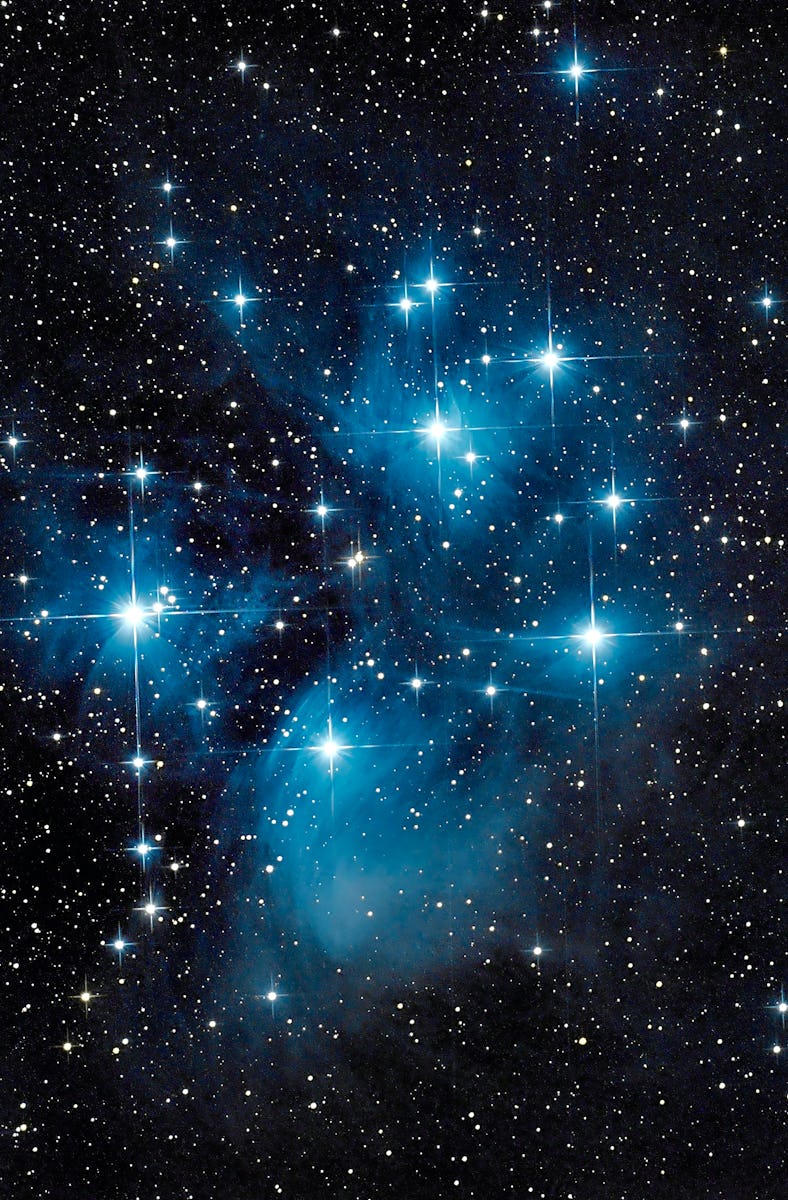April 2023 Sky Guide: Rare Hybrid Eclipse, Lyrid Meteor Shower, and More
There’s something for everyone.

If you need an excuse to get outside in the evening, the universe will always provide.
April’s night sky will be full of celestial wonders. A stunning Full Moon, a notable meteor shower, and a meetup of four bright targets are just the tip of the iceberg.
Here are five skywatching highlights to add to your April calendar:
April 6: Pink Moon
The Full Moon won’t literally be pink this month, but it is sometimes called the Pink Moon after a plant native to eastern North America. Phlox subulata, also known as creeping phlox and moss phlox, starts to sprout its colorful flowers in April.
But there are many other names for April’s Full Moon, as it has special significance for cultures and religions around the world. The Old Farmer’s Almanac recorded many names for April’s full Moon that stem from different Native American groups, such as the Breaking Ice Moon (Algonquin) and Frog Moon (Cree).
In Christianity, Islam, Judaism, Hinduism, and Buddhism, the full Moon this month marks the start or continuation of important holidays. Passover begins as April’s full Moon rises, thanks to the lunar nature of the Hebrew calendar. Easter generally falls on the Sunday after this full Moon, which is known as the Paschal Moon (the first full Moon after the Spring equinox).
The full Moon also marks the start of the Sri Lankan Buddhist holiday Bak Poya and the Hindu Hanuman Jayanti festival, and also falls around the halfway point in the holy month of Ramadan.
To see the Moon in its full glory, step outside just after midnight on April 6. The shining orb will reach peak fullness at 12:35 AM EST, according to NASA.
April 16: Moon and Saturn meet up
If you want to catch a glimpse of Saturn this time of year, you’ll have to be awake in the wee hours of the morning. The elusive planet will first appear above the horizon in early April, just before the sun starts to rise.
As the month goes on, Saturn will creep closer to the Moon until the two bodies reach their closest point on the morning of April 16.
If morning skywatching isn’t your thing, rest assured that Saturn will slowly creep into the evening sky as the year goes on. By July, Saturn will be visible before midnight, and will reach its prime viewing point in opposition on August 27.
April 20: A rare eclipse
Skywatchers in the southern hemisphere will get a chance to see a rare hybrid solar eclipse at the end of April. Hybrid eclipses change in appearance from annular to total as they progress, giving viewers the best of both views.
Of all 224 solar eclipses that fall in the 21st century, only seven are hybrid eclipses, according to Space.com. This year’s will be visible from Southeast Asia and Australia, with the path of totality — the region where you can see the eclipse at its fullest — crossing through western Australia and eastern Indonesia.
Around 4:16 AM UTC, the eclipse will be at totality for just one minute and 16 seconds. Then, it’ll be another eight years before Earth sees another hybrid solar eclipse.
The next one will happen on November 14, 2031, and will be partially visible in the northern and southern hemisphere (though its path of totality will fall right over the Pacific Ocean). But you won’t have to wait that long to see any kind of solar eclipse: this October will bring an annual solar eclipse to North and South America.
April 21-22: Star clusters galore
A spectacular meetup of four celestial superstars will grace the skies toward the end of April. Look for bright Venus in the western evening sky, as it’ll be nestled near the star clusters Pleiades and Hyades.
Hyades is known for its v-shape formation, punctuated by the reddish glow of the star Aldebaran – the brightest star in the constellation Taurus. And Pleiades, also known as the Seven Sisters, will appear as a bluish cluster just below Venus.
Plus, the crescent Moon will sail by this collection of brilliant objects on the evenings of April 21 and 22, according to EarthSky.
Lyrid meteor shower seen at the Mingantu Observing Station.
April 22-23: Lyrid meteor shower peak
After a meteor shower dry spell these past few months, a notable viewing opportunity is finally in the forecast for April.
The Lyrids are a moderate shower that light up the sky every Spring. This year, their peak is predicted to come two days after the new Moon, so dark skies should offer solid viewing conditions. However, the Lyrids don’t shine as brightly or as frequently as other showers, so it might be tricky to get a good view of the shower from urban settings, says NASA.
Your best viewing spot will be anywhere in the northern hemisphere, though the Lyrids are still visible from the southern hemisphere as well. Look for the bright star, Vega, which is in the constellation Lyra. Meteors will appear to radiate near the constellation.
A few days before the Lyrids peak, you can also catch the start of the eta Aquariids on April 15. This shower is on the stronger side and peaks in early May. The eta Aquariids can be seen from all over the world, but are typically more vibrant south of the equator, according to the American Meteor Society.
This article was originally published on